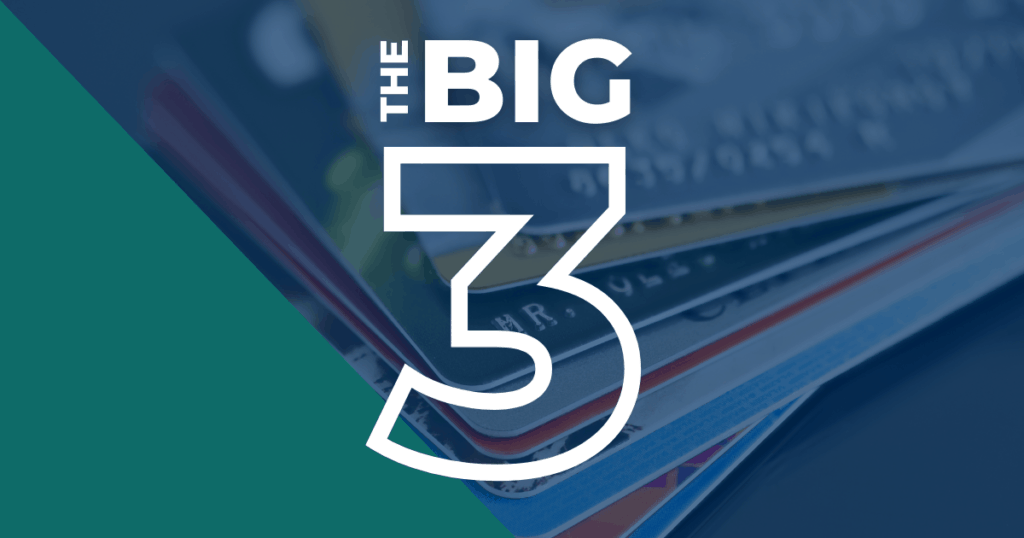
What Is Browser Fingerprinting?
On May 6, 2021 by Morthe StandardIf you have been on the internet and used any of its services, then chances are you have left fingerprints large enough to allow anyone to track your entire online activities.
Gone are the days when surfing the internet used to be a blissful non-threatening activity. Today’s internet users now have to deal with so many threats, including browser fingerprinting. And these threats can be as mild as someone watching all your online activities and as grave as becoming a target for some internet attack.
In this article, we will discuss the major challenges posed by browser fingerprinting and how some solutions such as GoLogin proxy integration can help overcome these challenges.
Table of Contents
Browser fingerprinting
Browser fingerprinting is a type of online identification mechanism used by some websites to collect personal information about an internet user. It can also be called device fingerprinting or online fingerprinting and includes special scripts to gather unique information about the device and browser with which you are accessing a website.
The script gives instructions to your browser and proceeds to collect personal information about your device, such as the operating system of your device, the type of browser you are using, your device preset language, your current time zone, software and extensions installed on your device and browser, your device screen resolution and color intensity, and whether or not you are using ad blockers.
This information list can then be stitched together to create a unique identity that could be traced back to you. And because some scripts even go as far as checking for more technical specifications such as device drivers and graphics card, these websites can have enough unique information to confidently and reliably identify you amidst the billions of internet users.
How does browser fingerprinting work?
A typical fingerprinting script looks like any other type of browser script. Scripts are usually written and added to browsers to allow you to browse and render videos and images effortlessly. And with many websites, a fingerprinting script can be added to your browser without your knowledge or consent.
The following are some of the ways browser fingerprinting work:
-
HTML5 canvas fingerprinting
Perhaps the most sophisticated browser fingerprinting works by having a Canvas gather graphical information about the device. The Canvas is an element included in the HTML5 code used to build and design virtually every website. So when you try to interact with a website, the Canvas is activated to induce your browser to draw some text or image. This way, the element will collect information on your font style and the graphics card, drivers, operating system, and browser type.
-
Audio fingerprinting
The script may not compel your browser to render an image or text; instead, it may try to test how sounds are played on your device. That way, audio fingerprinting can gather information such as your device drivers alongside its sound software and hardware.
How browser fingerprinting can pose a valid threat to web scraping
Now that we know what browser fingerprinting is and how it works let us see how it poses a serious threat to several online activities, including web scraping.
The use of cookies is the other way websites can create, monitor and track your digital fingerprints. But unlike cookies that must be downloaded to your device first before your identity can be formed, browser fingerprinting occurs discreetly and strictly on the websites. It means you will not be downloading any files neither will you know what information about you is being collected.
Also, cookies can be deleted to terminate the fingerprinting. But this is not so with browser fingerprinting because, of course, nothing was downloaded.
This makes this tracking method a valid threat to everything we do online. And some of the ways browser fingerprinting can cause a challenge to web scraping are:
-
IP address blocking
Amongst the many information collected by fingerprinting scripts is your internet protocol (IP) address. And once a website gets ahold of your IP, it becomes easier for them to stop you from performing web scraping by blocking your IP.
-
Lack of privacy
Fingerprinting scripts do not only collect information about your device and browser; they also gather information on all your online activities. And this can be bad for web scraping as the process, more or less, is supposed to be a private one.
Digital tracking makes it possible for the websites to see and keep track of every data you scrape from their servers.
Solutions to the challenges pose by browser fingerprinting
One of the most effective solutions to digital tracking is applications such as the GoLogin application. The GoLogin app is a browser management application that works on operating systems including Windows, Linux, and Mac. The app can be easily integrated with a proper proxy to configure and change browser fingerprints, manage browser profiles, store, edit, share and synchronise your personal information, amongst other things.
A GoLogin proxy integration is fast and straightforward and considered a proper fit for mitigating the anti-scraping problems caused by browser fingerprinting. Check the Oxylabs’ website to learn more about how to set up proxies with a GoLogin app.
Conclusion
Browser fingerprinting is a technique that websites can use to gather enough information about you to interfere with many of your online activities, including web scraping.
One way you can easily get around this problem and proceed with web scraping is to use an app called GoLogin integrated with an excellent proxy server.
You may also like
Recent Posts
 Unleashing AI Power for Small Business Marketing Success
Unleashing AI Power for Small Business Marketing Success Pourquoi Choisir Une Structure En Acier Pour Vos Projets En Afrique ?
Pourquoi Choisir Une Structure En Acier Pour Vos Projets En Afrique ? Top IPTV France Providers: Finding the Best Service for You
Top IPTV France Providers: Finding the Best Service for You The Importance of Innovation Management in Business Success
The Importance of Innovation Management in Business Success How to Measure Lab Diamond Ring Size
How to Measure Lab Diamond Ring Size Web hosting plan: pro and cons of shared hosting and VPS hosting
Web hosting plan: pro and cons of shared hosting and VPS hosting White Sapphire vs. Diamond: The Ultimate Comparison
White Sapphire vs. Diamond: The Ultimate Comparison How Pawnbroking Works: A Step-by-Step Guide to Pawn Loans
How Pawnbroking Works: A Step-by-Step Guide to Pawn Loans GH Express LLC: Your Strategic Partner for Business Success in the U.S.
GH Express LLC: Your Strategic Partner for Business Success in the U.S.Novita Diamonds Shines a Light on Women’s Empowerment with Dress for Success Partnership
Buying Ethereum Down Under: Your Guide to Purchasing ETH in Australia
 Exploring the Brilliance of Lab-Grown Diamonds: Understanding the 4Cs
Exploring the Brilliance of Lab-Grown Diamonds: Understanding the 4Cs Lab Diamonds: The Top Choice for Ethical, Affordable, and Sustainable Brilliance
Lab Diamonds: The Top Choice for Ethical, Affordable, and Sustainable Brilliance SEO Backlink Services and Template Customization by a Pennsylvania SEO Expert
SEO Backlink Services and Template Customization by a Pennsylvania SEO Expert The Sparkle of Sustainability: Lab Grown Diamonds Adelaide
The Sparkle of Sustainability: Lab Grown Diamonds Adelaide
Popular Posts
 Leveraging User Forums and Communities: Online iPhone Selling
Leveraging User Forums and Communities: Online iPhone Selling Why You Should Be Adding Content to Google My Business
Why You Should Be Adding Content to Google My Business 360-Degree Digital Marketing Services: What’s included?
360-Degree Digital Marketing Services: What’s included? What are the Different Types of Marketing?
What are the Different Types of Marketing? 5 Tips for Sharing Files and Information Online
5 Tips for Sharing Files and Information Online 6 Major Factors To Consider Before You Hire Marketing Agencies Auckland
6 Major Factors To Consider Before You Hire Marketing Agencies Auckland First-Time Buyer’s Guide to Industrial Sewing Machines
First-Time Buyer’s Guide to Industrial Sewing Machines Benefits of Hiring a Full Time SEO Specialist
Benefits of Hiring a Full Time SEO Specialist Tips For Effective And Appealing Web Design
Tips For Effective And Appealing Web Design 3 Biggest Strategies That Can Help You Scale Up Your Company
3 Biggest Strategies That Can Help You Scale Up Your Company Using An SEO Consultant To Amp Up Your SEO Strategy During COVID-19
Using An SEO Consultant To Amp Up Your SEO Strategy During COVID-19- What Is The Essence Of Enterprise Resource Management Systems
How To Make Your Air Conditioning Business Ready For Google?
 Why Should You Add Comments To Your Blog?
Why Should You Add Comments To Your Blog?) 3 Reasons Why Forecasting Sales Is Important For Businesses
3 Reasons Why Forecasting Sales Is Important For Businesses
Most Viewed Posts
 API Integration Best Practices: Ensuring Secure and Scalable Solutions
API Integration Best Practices: Ensuring Secure and Scalable Solutions On The Whole Learning Elaborating Open Source API Tools
On The Whole Learning Elaborating Open Source API Tools Eliminate Annoyance By Fixing These Google Drive Problems
Eliminate Annoyance By Fixing These Google Drive Problems Reasons To Kick-Start Node JS Centric Product Development With Full-Swing
Reasons To Kick-Start Node JS Centric Product Development With Full-Swing Reasons Why It Is Important to Select the Best Online Education Platform for a Programming Assignment
Reasons Why It Is Important to Select the Best Online Education Platform for a Programming Assignment 6 Benefits of Using a Good Website Builder
6 Benefits of Using a Good Website Builder Techinques To Take Services For App Developers
Techinques To Take Services For App Developers- Four compelling reasons why the cloud makes it easy is the ideal IoT application
 A Guide To Hiring The Best Web Development Company
A Guide To Hiring The Best Web Development CompanyThe Best Tools For Mobile-First Indexing Strategy Development
